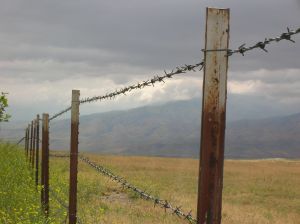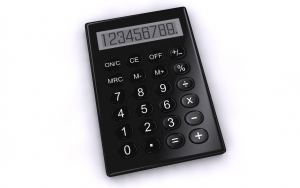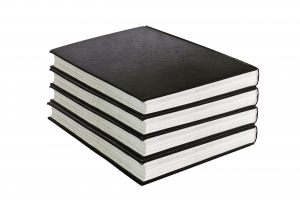Enforcing An Injunction In New York: A Matter Of Mutual Contempt
 We previously spoke about injunctions; the court orders that most often forbid one party from doing something either temporarily or permanently. They are the subject of often heated controversies, the ones you see on the news where two sides in a passionate dispute go to court to settle their differences in the modern day equivalent of the Roman Coliseum, otherwise known as the courtroom. The losing party never does like it. He’s the one with his head slumped as the winner too often, and often too early, gloats over his victory. What happens when the losing party ignores the court order and goes ahead and does what he wants anyway? What happens when he violates the temporary restraining order, the temporary injunction, or the permanent injunction? In New York, the right way to enforce an injunction is for the aggrieved party to make a motion to hold the other in contempt for violating the court order. What everyone should remember is that contempt is a two way street; the rules are fair but the punishment can be harsh.
We previously spoke about injunctions; the court orders that most often forbid one party from doing something either temporarily or permanently. They are the subject of often heated controversies, the ones you see on the news where two sides in a passionate dispute go to court to settle their differences in the modern day equivalent of the Roman Coliseum, otherwise known as the courtroom. The losing party never does like it. He’s the one with his head slumped as the winner too often, and often too early, gloats over his victory. What happens when the losing party ignores the court order and goes ahead and does what he wants anyway? What happens when he violates the temporary restraining order, the temporary injunction, or the permanent injunction? In New York, the right way to enforce an injunction is for the aggrieved party to make a motion to hold the other in contempt for violating the court order. What everyone should remember is that contempt is a two way street; the rules are fair but the punishment can be harsh.
A recent high profile case here in New York that involves an alleged violation of a temporary restraining order, or TRO, concerns Long Island College Hospital in downtown Brooklyn. It was sold to SUNY Downstate Medical Center in 2011. Instead of keeping it open as it said it would when it bought the hospital, SUNY Downstate reportedly has tried to shut the hospital down. New York City Public Advocate Bill de Blasio obtained a temporary restraining order preventing SUNY Downstate from taking any action which could facilitate the shutdown. According to de Blasio, SUNY Downstate violated that TRO by transferring patients and diverting ambulances from the hospital; the hospital staff went so far as to call the police to prevent their patients from being transferred in violation of the TRO. De Blasio even wrote a letter to the New York City Fire Commissioner, Salvatore J. Cassano, asking him to stop diverting ambulances from the hospital. The state court judge that approved the 2011 sale, the Hon. Carolyn Demarest J.S.C., now has invalidated the sale because she reportedly determined that SUNY Downstate did not buy the hospital in good faith; i.e., it did not really intend to keep the hospital open as it claimed.
The rules for holding a party in civil contempt are simple and fair. A recent case, decided by the New York Appellate Division, Second Department on June 5, 2013, illustrates this. Suiss v. Baron, 107 A.D.3d 690, 966 N.Y.S.2d 481, 482 (2nd Dept. 2013), was an action to partition real property. The court ordered the defendant, who occupied the property, to pay money due for the use and occupancy of the real property to a temporary receiver or to give up possession of the property; i.e., she either had to pay to use the property or get out. The defendant, evidently, did not like the order and refused to obey it. The plaintiff tried to enforce the court order by making a motion to hold the defendant in civil contempt, which the lower court granted. In upholding the civil contempt finding, the Second Department held that:
“To prevail on a motion to punish a party for civil contempt, the movant must demonstrate that the party charged with contempt willfully violated a clear and unequivocal mandate of a court’s order, with knowledge of that order’s terms, thereby *691 prejudicing the movant’s rights” (Rubin v. Rubin, 78 A.D.3d 812, 813, 911 N.Y.S.2d 384; see Judiciary Law § 753[A] [3]; McCain v. Dinkins, 84 N.Y.2d 216, 225-226, 616 N.Y.S.2d 335, 639 N.E.2d 1132; McGrath v. McGrath, 85 A.D.3d 742, 924 N.Y.S.2d 805; Matter of Philie v. Singer, 79 A.D.3d 1041, 1042, 913 N.Y.S.2d 745). Additionally, the movant has the burden of proving contempt by clear and convincing evidence (see Matter of Philie v. Singer, 79 A.D.3d at 1042, 913 N.Y.S.2d 745; Vujovic v. Vujovic, 16 A.D.3d 490, 491, 791 N.Y.S.2d 648).
It is only fair that before a court can hold a party in contempt, it has to be certain that the offending party knew what it should not do and went ahead and did it anyway. Putting the order into the party’s hands, and making sure the order is clear, normally takes care of this. It also is fair that the offending party has to cause harm before he can be punished; no harm, no foul, is a reasonable rule. The higher burden of proof, that the violation be established by clear and convincing evidence, rather than the normal preponderance of the evidence, is another way to try to ensure that only the truly deserving are held in contempt.
Continue reading
 New York Business Lawyer Blog
New York Business Lawyer Blog


 The rules regarding expert’s disclosure in New York, concerning when a Plaintiff or Defendant has to disclose to its opponent an expert witness that it intends to testify at trial if it hopes to use the expert’s affidavit in support of or opposition to a motion for summary judgement, might seem confusing. The rules have caused so much misunderstanding that the Appellate Division, Second Department, went out of its way to clarify them, in a recent decision, Rivers v. Birnbaum, 102 A.D.3d 26, 953 N.Y.S.2d 232 (2nd Dept. 2012). The key to understanding the rules is to understand the decision, both its rationale and the reasons the Second Department went out of its way to explain it in the first place.
The rules regarding expert’s disclosure in New York, concerning when a Plaintiff or Defendant has to disclose to its opponent an expert witness that it intends to testify at trial if it hopes to use the expert’s affidavit in support of or opposition to a motion for summary judgement, might seem confusing. The rules have caused so much misunderstanding that the Appellate Division, Second Department, went out of its way to clarify them, in a recent decision, Rivers v. Birnbaum, 102 A.D.3d 26, 953 N.Y.S.2d 232 (2nd Dept. 2012). The key to understanding the rules is to understand the decision, both its rationale and the reasons the Second Department went out of its way to explain it in the first place.  The rules governing the use of expert witness affidavits to oppose, or support, motions for summary judgement in New York, especially in the Appellate Division, Second Department, often are misunderstood. There are cases in which the trial court does not consider an expert’s affidavit because the party that tries to use it did not disclose the expert before the Note of Issue and Certificate of Readiness were filed, which is when fact discovery should be completed. See
The rules governing the use of expert witness affidavits to oppose, or support, motions for summary judgement in New York, especially in the Appellate Division, Second Department, often are misunderstood. There are cases in which the trial court does not consider an expert’s affidavit because the party that tries to use it did not disclose the expert before the Note of Issue and Certificate of Readiness were filed, which is when fact discovery should be completed. See  When it comes to negotiating the best deal possible most people consider words to be king. If you make an offer there has to be a justification. If you refuse the offer, you immediately have to make a counter-proposal, and justify it. You tout the benefits of your product, justify your asking price, and critique the other side’s position; a few well-placed matter-of-fact observations, should do the trick. What most people do not realize, though, is that sometimes certain things, at certain times, are best left unsaid. Sometimes, silence is golden.
When it comes to negotiating the best deal possible most people consider words to be king. If you make an offer there has to be a justification. If you refuse the offer, you immediately have to make a counter-proposal, and justify it. You tout the benefits of your product, justify your asking price, and critique the other side’s position; a few well-placed matter-of-fact observations, should do the trick. What most people do not realize, though, is that sometimes certain things, at certain times, are best left unsaid. Sometimes, silence is golden. Technology is not the only thing you need to investigate insurance fraud. Technology might tell you who to question, but someone still has to do the questioning. Analysis of big data might give you a lot to talk about, but someone, preferably with a little training and experience, is going to have to have that conversation. Technology might be able to sort through a tremendous amount of otherwise indecipherable data in order to identify, or obtain, clues about possible fraud. No matter how good the technology, no matter how vast the meta-data, no matter how many computers parse the data, a skilled investigator still has to connect the dots, and, eventually, a lawyer still has to convince a jury that those dots create a clear, unmistakable picture of fraud.
Technology is not the only thing you need to investigate insurance fraud. Technology might tell you who to question, but someone still has to do the questioning. Analysis of big data might give you a lot to talk about, but someone, preferably with a little training and experience, is going to have to have that conversation. Technology might be able to sort through a tremendous amount of otherwise indecipherable data in order to identify, or obtain, clues about possible fraud. No matter how good the technology, no matter how vast the meta-data, no matter how many computers parse the data, a skilled investigator still has to connect the dots, and, eventually, a lawyer still has to convince a jury that those dots create a clear, unmistakable picture of fraud.  Negotiations are an important part of everyday existence for all businesses, whether big, medium, or small, whether they are located in New York, around the country, or anywhere in the world. Every time businesses buy and sell goods and services, they negotiate. Business owners want to buy low and sell high. They want to break into a market either by undercutting their competition or by charging a premium for their product to convince buyers of its superior quality. Business negotiations impact the lives of everyday people, too. Everyone knows what a Kindle is, what an iPad is, and what e-books are. Many either have, or know someone who has, at least one of them. In the last few years it’s become common for people to walk around with their nose in their tablet, either reading an e-book or surfing the web. Business negotiations played a big part in making this happen.
Negotiations are an important part of everyday existence for all businesses, whether big, medium, or small, whether they are located in New York, around the country, or anywhere in the world. Every time businesses buy and sell goods and services, they negotiate. Business owners want to buy low and sell high. They want to break into a market either by undercutting their competition or by charging a premium for their product to convince buyers of its superior quality. Business negotiations impact the lives of everyday people, too. Everyone knows what a Kindle is, what an iPad is, and what e-books are. Many either have, or know someone who has, at least one of them. In the last few years it’s become common for people to walk around with their nose in their tablet, either reading an e-book or surfing the web. Business negotiations played a big part in making this happen. There is no shortage of trial attorneys in New York, or around the country. What makes a good trial attorney, however, is open to debate. How to become one is even more difficult to define. Is it something you can master through hard work and perseverance; is it something you have to have a natural aptitude for; or is it some combination of both? As we previously discussed, there is a lot of practice involved in
There is no shortage of trial attorneys in New York, or around the country. What makes a good trial attorney, however, is open to debate. How to become one is even more difficult to define. Is it something you can master through hard work and perseverance; is it something you have to have a natural aptitude for; or is it some combination of both? As we previously discussed, there is a lot of practice involved in  We are going to pick up where we left off in our last article on
We are going to pick up where we left off in our last article on  The last few articles have discussed the basic concepts and rules of
The last few articles have discussed the basic concepts and rules of  Perhaps one of the most misunderstood tools found in New York law is the injunction. Injunctions affect businesses big and small because they often are used in commercial litigation.
Perhaps one of the most misunderstood tools found in New York law is the injunction. Injunctions affect businesses big and small because they often are used in commercial litigation.